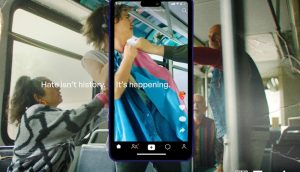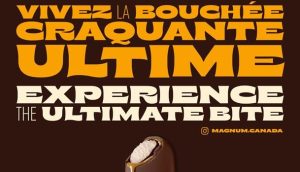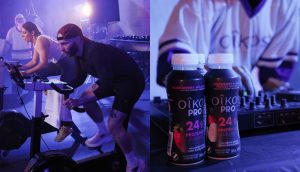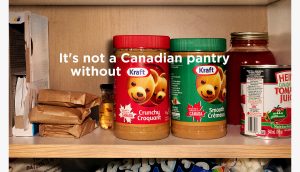You might see tempers flaring at Burger Kings across Canada – and online – and that’s because in August the fast-food chain reintroduced the Angry Whopper to its restaurants.
Word of the splenetic sandwich’s return was spread through a campaign developed by Toronto-based Taxi 2. With media buys helmed by Toronto-based Initiative, the national effort includes TV, radio and banner ads, as well as a microsite at burgerking.ca/getangry. The creative plays on the idea that when you eat the spicy burger, angry thoughts invade your mind, and drives viewers to the site to assess their aggressiveness levels. The site asks mad burger fans to yell at their computers via webcam, and uses face-tracking tech to see if their anger quotient is worthy of the irate burger. It’s Taxi 2’s first creative on behalf of Burger King since they began working together in March, and is one of the first commercial uses of the facial expression mapping tech in Canada. Taxi Montreal adapted all material for the Quebec market.
Adding limited time premium burger offerings like the Angry Whopper to items on the regular menu work to balance out a value strategy that the QSR brand has put emphasis on over the last year. It’s based on Burger King’s King Deal value menu, which features a different sandwich special every day of the week in a combo that offers customers good portions at a low price – one dollar and ninety-nine cents to be exact.
‘We need to make sure that we are communicating and having a strong product offering on both ends because the customers, especially these days, expect you to have both,’ explains Jason Keown, senior director of marketing, Burger King Canada.
The strategy is working. According to the NPD Group, between May 2008 and 2009 Burger King’s dollar volume went up by 11%, and within the QSR burger segment, which grew overall by 5%, the restaurant’s share of dollars increased by 0.5%. Traffic also grew, driven by the value menu. From January to March, value menu occasions at BK increased by 6% as compared to the regular menu, which remained relatively flat.
As such, Burger King plans on stepping up its value messaging in its communications. It recently launched a national coupon program and, on top of keeping King Deal messaging prevalent at point of purchase, it intends to further lace it into its national media buys. ‘We’ll be dialing that up now to make sure that we are reactive to the customer’s increasing sensitivity to value,’ says Keown. ‘From a strategic perspective we’re very happy with how that value offering resonates with our customer. We just need to make sure that they’re aware of it.’























